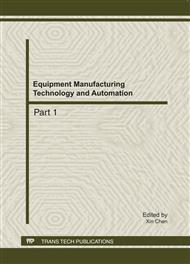p.2181
p.2191
p.2196
p.2204
p.2208
p.2215
p.2219
p.2226
p.2230
Optimization of Hydrolysis Pretreatment Conditions with Two Kinds of Enzymes for Enhanced Proteolysis in Egg Yolk Solution Using Response Surface Methodology
Abstract:
Response surface methodology was used to optimize proteolysis of egg yolk solution using Alcalase and Flavorase according to three conditions, the ratio of two enzyme concentration (Alcalase and Flavorase), pH values and hydrolytic time. The responses degree of hydrolyzation (DH) and peptide yield were studied. The protein subunit from egg yolk was purified and hydrolyzed by Alcalase and Flavorase step by step. The results showed that the best ratio of enzyme concentration was 0.8% for Alcalase, and 0.4% for Flavorase to hydrolyzed 10% yolk solution. The hydrolytic time of the two enzymes was 2h respectively. Then the solution was incubated for 4h at 55°C while rotating at 60 r./min. To evaluate the hydrolysate, both the degrees of hydrolysis (DH) and the yields of the polypeptides were taken into consideration. The optimum ratios of enzyme and hydrolytic time were 2.43 and 1.14 respectively, and the optimum pH was 6.64. The optimized DH was 13.233%, and peptide yield was up to 45.573mg/ml.
Info:
Periodical:
Pages:
2208-2214
Citation:
Online since:
August 2011
Authors:
Keywords:
Price:
Сopyright:
© 2011 Trans Tech Publications Ltd. All Rights Reserved
Share:
Citation:


